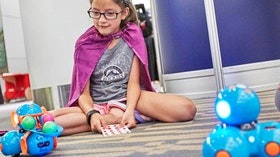Homepage
•
Learning Library
•
Blog
•
6 ways to personalize learning with flexible seating
Expand breadcrumbs
Expand breadcrumbs
- Learning Library
- Blog
- 6 ways to personalize learning with flexible seating
- Homepage
- •
- Learning Library
- •
- Blog
- •
- 6 ways to personalize learning with flexible seating
6 ways to personalize learning with flexible seating
By Julie Randles
February 17, 2017








